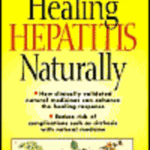Many of us wonder if our dogs get too many vaccines over the years. Some vaccines are now being given every third year instead of annually. Most of us trust our vets to make the right decisions, but it is up to us as pet owners to be informed before we give consent.
The core vaccines, recommended for all dogs, are rabies (required by law), distemper, Adenovirus (hepatitis) and parvovirus. The American Animal Hospital Association (AAHA) came out with new guidelines for vaccine schedules in 2003, and revised them in 2006 after getting much feedback from experts in immunology, infectious diseases, internal medicine and clinical practices. After receiving many complaints from dog owners and vets that some canine clients were developing serious problems after being vaccinated, the AAHA offered a revised vaccine schedule.
In the 2003 findings, the AAHA Guidelines regarding rabies vaccines concluded, “Every effort should be made to change laws that require vaccination more often than every three years since annual vaccines cannot be shown to increase efficacy and it is known to include adverse events.
By 2006 when the AAHA came out with new guidelines, two states – Arkansas and Louisiana – were still using the old guidelines of giving annual rabies vaccines. Vets reported incidences of hypothyroidism developing in dogs that received annual rabies vaccines. If you have a vet adhering to the old recommendations, be able to give informed consent or ask for the 3-year vaccine.
Dr. Bob Rogers, D.V.M., the owner of Critter Fixer Pet Hospital, Inc. in Spring, Texas has great interest in vaccine guidelines because of his own pets and clientele. He says he has practiced his schedule for 7 years, with over 30,000 pets without vaccine breaks (No outbreaks of diseases for which the animals were vaccinated). He is trying to inform the public and other vets of the newest AAHA guidelines to avoid over-vaccinating. His comments and interpretations of technical data are presented along with technical information from the AAHA.
Leptospirosis is a bacterial kidney infection. Dogs can contract this disease if they go into water that has been contaminated with wildlife urine. Your vet should know whether your dog needs this protection. Hunting dogs, pond swimmers, lake retrievers and other such dogs might need protection, but this is not for stay-at-home pets that never go near water or for those that use the chlorinated family pool for swimming.
Some dogs receive Bordetella vaccines to prevent kennel cough, but there is some argument about its effectiveness. Dr. Rogers thinks the nasal spray is more effective — it works in 72 hours vs. 2 weeks for the injected vaccine — which he says may not be the “correct serovar (a group of microorganisms distinguished by their surface antigens) that dogs are exposed to.” Some states are upgrading their injectable serums to be more effective. He recommends the intranasal version 3-4 days before expected exposure to boarding, grooming, and dog shows.
The AAHA guidelines changed for puppies since the 2003 guidelines because they learned that pups were not protected when they received their last doses of parvovirus and distemper at 12 weeks of age. Pups less than 14-16 weeks old seem to carry over a “maternally derived antibody” that may prevent them from developing a protective immune response if the vaccine is given any earlier.
As for giving the parvovirus vaccine any sooner, Dr. Rogers notes, “At 6 weeks of age, only 30% of puppies are protected but 100% are exposed to the virus at the vet clinic.”
The 2006 AAHA revised vaccination guidelines for general veterinary practice are as follows:
Canine Parvovirus (CPV-2) (Modified Live Virus), Canine Distemper (CDV) (MLV) and Canine Adenovirus (CAV-2) (MLV parenteral): All pups should receive a minimum of 3 doses between 6-16 weeks with intervals of 3-4 weeks such as 6, 10, 14 weeks or 8, 12, 16 weeks). Final dose should be given no sooner than 14-16 weeks. (Parenteral means the “route of administration.”)
Note: The AAHA does not recommend CAV-1 or (MLV and killed) nor CAV-2 – killed or MLV topical.
Initial adult vaccines for dogs over 16 weeks old: 2 doses 3-4 weeks apart. One dose is considered protective and acceptable.
Boosters: After the initial series, all pups should receive a 1-year-booster; then revacc is recommended every 3 years. Note, although some manufactures recommend boosters annually, studies have shown that dogs are protected against challenge up to 7 years post-vacc with the MLV vaccine. “Challenge” means that “test” dogs were injected with viruses to test immunity effectiveness.
Killed Canine Parvovirus (CPV-2) vaccines are not recommended at all.
Rabies 1-year (killed): Puppies less than 16 weeks old can receive 1 dose as early as 3 mos. of age. (But many vets recommend waiting until 16 weeks.) They should then receive another dose at one year of age, and then tri-annually if your state allows it. All states have laws requiring rabies vaccines, but vets are trying to challenge the need for repeated vaccines. Dr. Rogers says, “After the second rabies vaccine, subsequent vaccines have no effect. The vaccine is blocked by the antibodies from the previous vaccine.”
Rabies 3-year (killed): If you begin with the 3-year dose, then the dog can receive another at one year following the initial dose, no matter the age of the dog.
Non-core vaccines for Bordetella, Leptospirosis, and Lyme disease are recommended only for those pets at risk in endemic areas.
Not recommended at all: Corona, Giardia, and CAV-1 are not recommended by the AAHA.
As an alternative to what many dog owners consider to be over-vaccinating, owners may opt for blood titers, which determine the amount of protection a dog has from common diseases. My vet, Dr. Daniel Smith, in an office visit on 8-20-10, said that some owners prefer to have a blood titer test done, which is then sent to a lab at Cornell University for comparison results of immunity levels.
Dr. Smith said that laboratories differ in what levels of protection are necessary to avoid giving the vaccines, but they (all three office vets) feel the Cornell U. results are reliable for their clients who decide for or against scheduled vaccines based on lab results.
One negative for many owners is that the lab tests cost more than giving the vaccines and requires a second trip if the owner opts for the injection.
Ultimately, you need to go with your conscience or have great confidence in your vet.
Sources:
“2006 AAHA Canine Vaccine Guidelines Revised.” 28 pp. pdf file. Http://www.aahanet.org/resources/guidelines.aspx. Chair person: Michael A. Paul, DVM; Leland E. Carmichael, DVM, Ph.D.; Henry Childers, DVM, et al. Retrieved 8-21-10.
Http://www.newvaccinationprotocols.com/K9 Recommendations.htm . Slide show last updated 5-5-06 by Dr. Bob Rogers, vet and owner of Critter Fixer Pet Hospital, TX, covering history behind modern-day vet consensus about vaccine guidelines. Retrieved 8-23-10.
“Canine Vaccination Guidelines.” Bob Rogers, DVM. Owner of Critter Fixer Pet Hospital, Inc. Spring, TX. Http://www.critteradvocacy.org./Canine Vaccination Guidelines.htm. Retrieved 8-19-10.
Interview: Dr. Daniel M. Smith, DVM, practicing vet for 11 years, Alburtis Animal Hospital, Alburtis, PA, 18011. 8-20-10.






